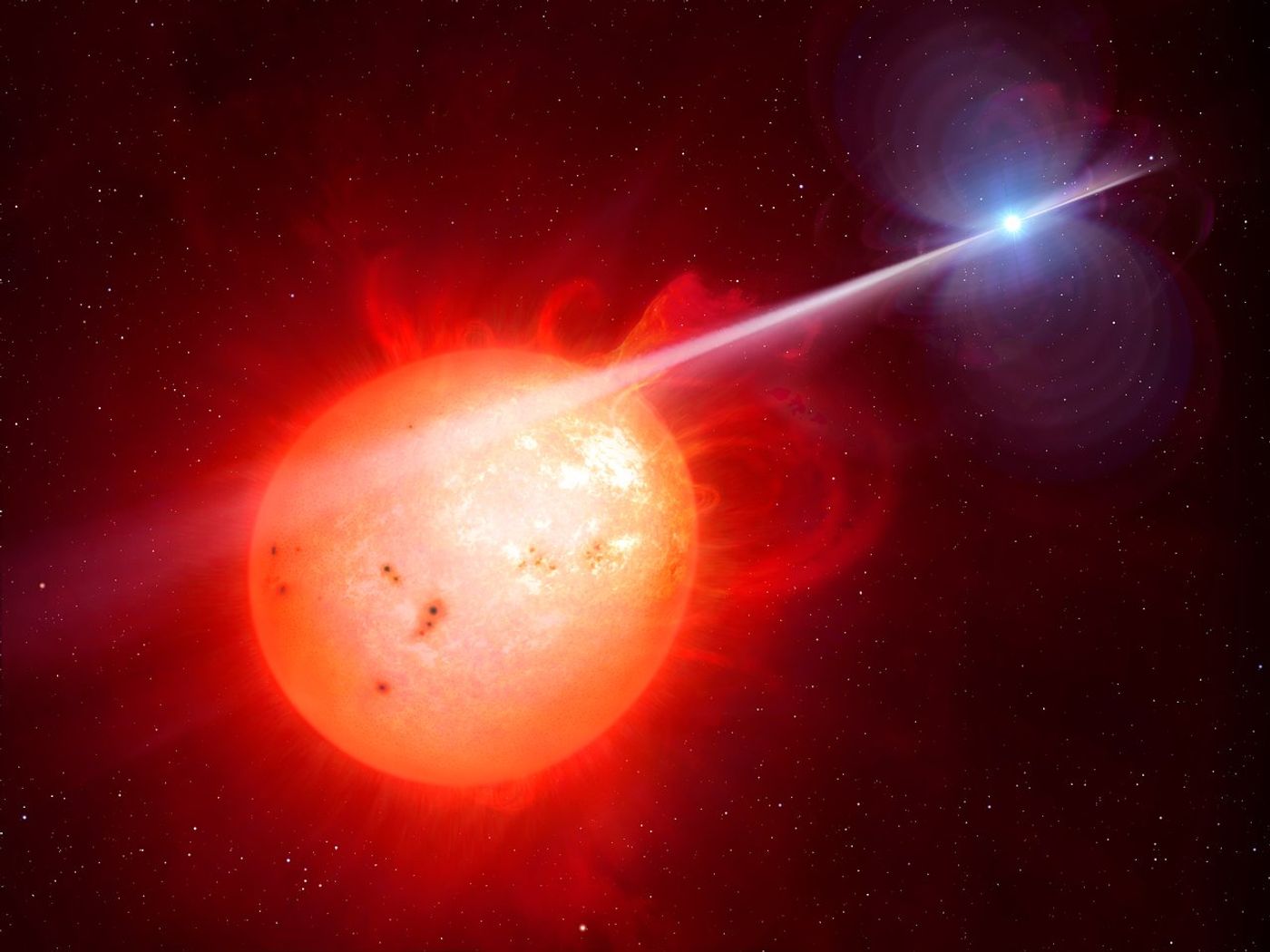Astronomers Observe White Dwarf that Lashes Out at Binary Companion
A very interesting binary star system subbed AR Scorpii some 380 light years away from our planet contains both a red dwarf and a white dwarf, but the qualities of this binary system in particular are what are making it an interesting system to observe.
Scientists were amazed to find that the white dwarf appeared to pulse every 1.97 seconds, which unleashed a lash of radiation towards the red dwarf in the same system. Such pulses are typically seen in neutron stars, but not white dwarfs, however astronomers have theorized that white dwarfs might be able to behave in similar ways.
Image Credit: M. Garlick/University of Warwick/ESO
The pulses are essentially excited electrons that get ejected from the white dwarf at nearly the speed of light, and the activity is reported to light up the entire system every time it happens.
AR Scorpii, also called AR Sco for short, was originally discovered in the 1970’s, but at the time we knew so little about the system that it was thought that the light effects were the result of a variable star. The latest observations, however, refute this idea and bring on some new theories.
The findings are published in the journal Nature.
“AR Scorpii was discovered over 40 years ago, but its true nature was not suspected until we started observing it in 2015,” said lead researcher Tom Marsh of the University of Warwick. “We realized we were seeing something extraordinary within minutes of starting the observations.”
The study also indicates that this is the first known binary system with a white dwarf that has been known to emit radiation at frequencies that we can pick up with radios here on Earth. This gives us something to listen to and try to learn from. Not only can they be picked up with radio, but they can also be observed with untraviolet.
"We've known pulsing neutron stars for nearly fifty years, and some theories predicted white dwarfs could show similar behavior,” said Boris Gänsicke, co-author of the new study. “It's very exciting that we have discovered such a system, and it has been a fantastic example of amateur astronomers and academics working together."
White dwarf stars are very small and compact when compared with full-sized stars, and they house a lot of energy when they are formed. Over time, they will cool because they cannot sustain themselves forever.
In some cases, white dwarfs can have the same density as a star as big as our Sun, but only be as large as a planet like Earth.
Source: ESO, Wikipedia









